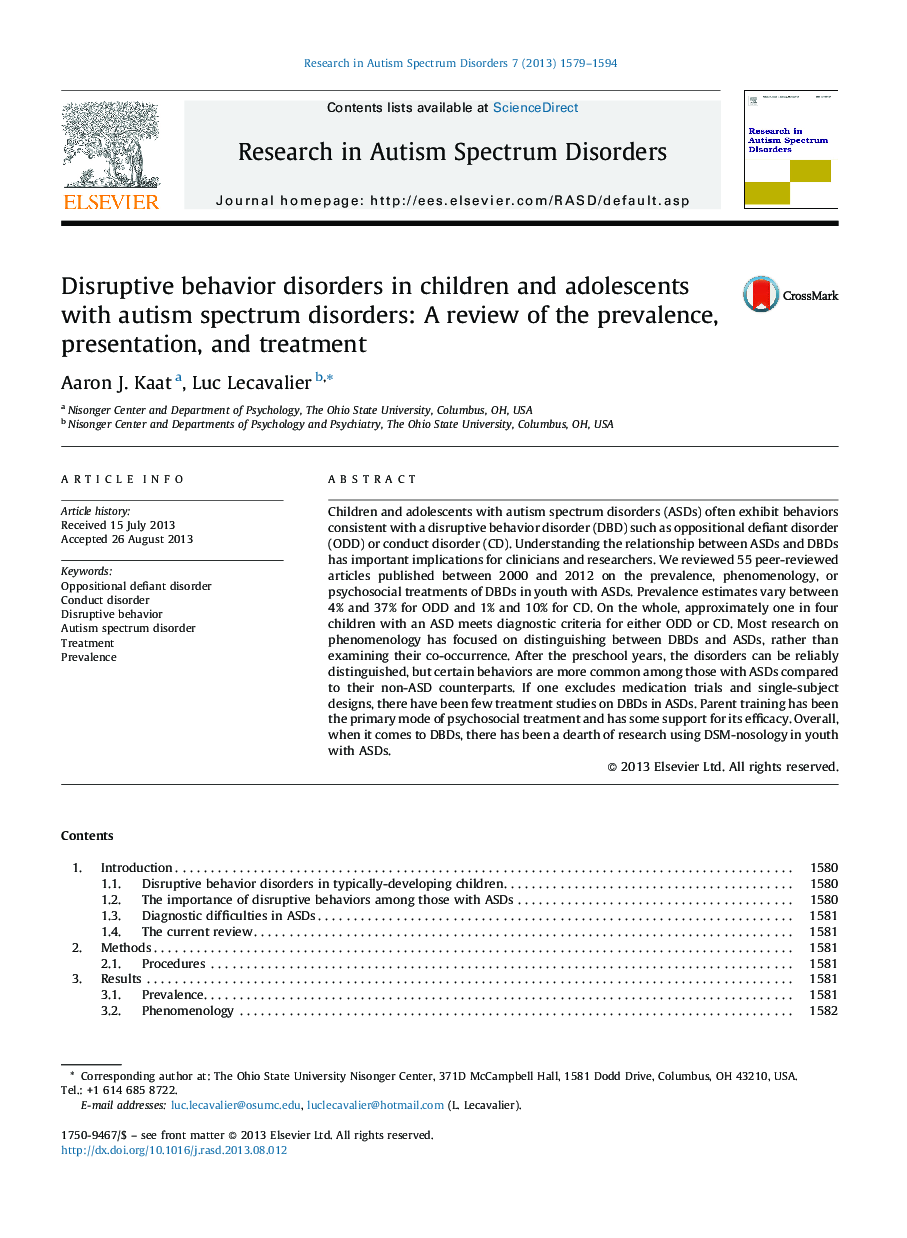| کد مقاله | کد نشریه | سال انتشار | مقاله انگلیسی | نسخه تمام متن |
|---|---|---|---|---|
| 370518 | 621873 | 2013 | 16 صفحه PDF | دانلود رایگان |

• Approximately 1 in 4 children with ASDs have a comorbid disruptive behavior disorder.
• ASDs and DBDs can be clearly distinguished in most cases.
• Most research suggests DBDs present similarly in ASDs as non-ASDs samples.
• Parent training has the greatest support for efficacy in the treatment of DBDs in ASD.
Children and adolescents with autism spectrum disorders (ASDs) often exhibit behaviors consistent with a disruptive behavior disorder (DBD) such as oppositional defiant disorder (ODD) or conduct disorder (CD). Understanding the relationship between ASDs and DBDs has important implications for clinicians and researchers. We reviewed 55 peer-reviewed articles published between 2000 and 2012 on the prevalence, phenomenology, or psychosocial treatments of DBDs in youth with ASDs. Prevalence estimates vary between 4% and 37% for ODD and 1% and 10% for CD. On the whole, approximately one in four children with an ASD meets diagnostic criteria for either ODD or CD. Most research on phenomenology has focused on distinguishing between DBDs and ASDs, rather than examining their co-occurrence. After the preschool years, the disorders can be reliably distinguished, but certain behaviors are more common among those with ASDs compared to their non-ASD counterparts. If one excludes medication trials and single-subject designs, there have been few treatment studies on DBDs in ASDs. Parent training has been the primary mode of psychosocial treatment and has some support for its efficacy. Overall, when it comes to DBDs, there has been a dearth of research using DSM-nosology in youth with ASDs.
Journal: Research in Autism Spectrum Disorders - Volume 7, Issue 12, December 2013, Pages 1579–1594